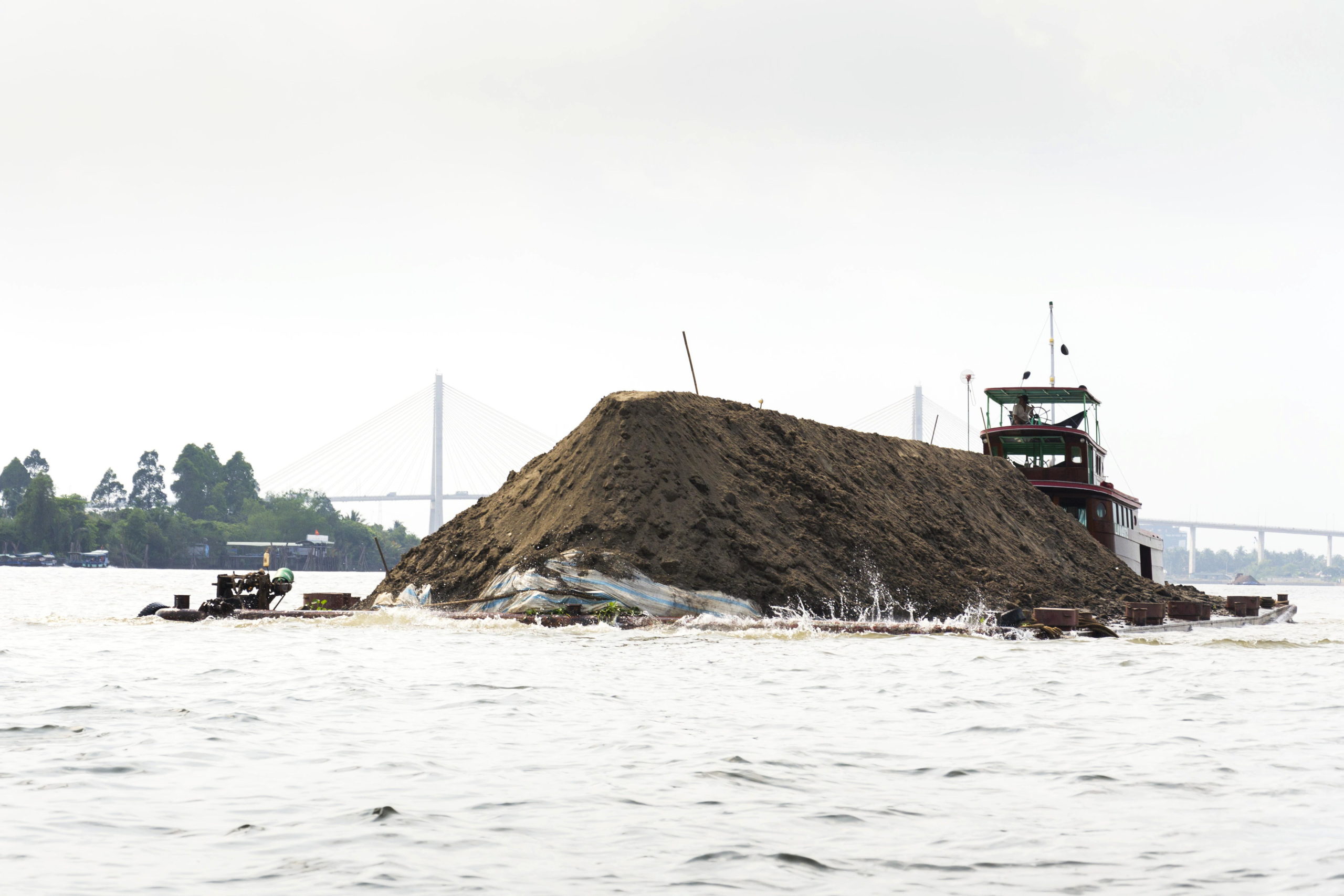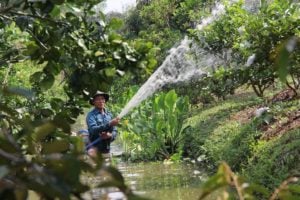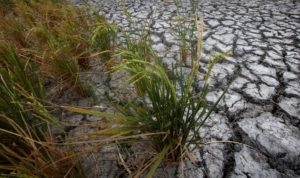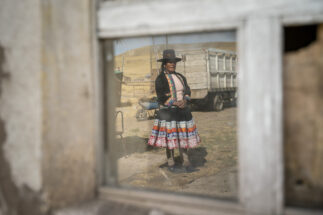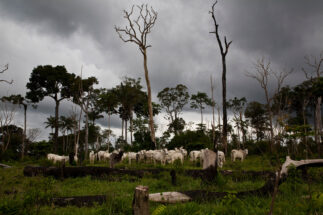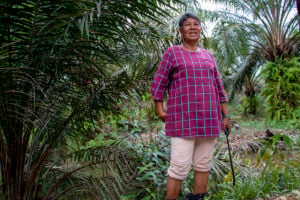Many people will be familiar with the dread when your income no longer covers your expenses; when you’ve exhausted your savings and are sinking ever deeper into debt. In the Mekong Delta, a similar downward spiral is happening. But it’s not the delta’s finances that are draining away – it’s the sand that sustains it. Not its economic stability that is being undermined, but its very foundations.
The Mekong is literally drowning in ‘sand debt’: far more sand is being removed than is being replenished. Without a budget setting out how much sand can be extracted sustainably, this debt will turn into disaster.
If you only look at the headline figures, all seems well with Vietnam’s Mekong Delta and the connected Dong Nai Delta – home to a combined 40 million people, growing cities, thriving economies, and a major regional rice bowl and seafood source. But a closer look reveals some real cause for alarm. The Mekong Delta is sinking. Saltwater is intruding ever further inland. The water table is dropping. All these come with significant costs to communities and nature, as infrastructure, livelihoods and the survival of species are negatively affected.
Blinded by the delta’s rapid economic growth and urbanisation over recent decades, decision-makers seem to have missed the fundamental threat to the delta: the fact that it is shrinking. The delta has already lost large areas of agricultural land to the sea, with studies estimating it is losing the equivalent of 1.5 football pitches every day. It’s like a company’s share price collapsing or the foundations of a family’s house crumbling. But few people, particularly decision-makers, are talking about it. When they do, they blame climate change, storms and sea level rise – the triggers, not the root cause of the problem.
Sand is being mined without limits
Everyone has turned a blind eye to the real cause: what is being lost beneath the murky waters of the Mekong River. No one is reading the balance sheets that show the delta has been massively overspending its annual sand ‘income’ and digging deep into its ancient reserves.
Sand is essential to development, as it is used in land reclamation and to make concrete and asphalt. But hundreds of millions of tonnes of sand have been extracted unsustainably from the bottom of the Mekong and Bassac river channels – as well as likely similar amounts from the Dong Nai – as if it were a free, infinite resource. At the same time, gargantuan amounts of sand have been trapped behind upstream hydropower dams in China, Laos and Thailand. This loss of natural capital has left the delta with insufficient resources to keep itself afloat – to replenish what is naturally distributed along the coast and keep the delta above the rising seas.
The Mekong Delta is losing the equivalent of 1.5 football pitches of land every day
The future cost of this oversight is high and rising rapidly. Coastal and riverbank erosion is wiping away productive fields, houses, stretches of road and other critical infrastructure. In many areas, riverbeds are now three metres deeper than they were 25 years ago, weakening riverbanks and sucking saltwater deeper into the delta. Without their protective offshore sandbanks, mangrove forests are being washed away.
Any auditor can see that the delta is facing ruin. It is haemorrhaging land faster and faster. Some areas are already deep in the red, having lost 50 cm of elevation over the past two decades, and these losses are mounting. When a delta loses land, it also starts losing freshwater, agricultural productivity, infrastructure and resilience. And eventually, people.
With an average elevation of less than one metre above sea level, the Mekong Delta is already extremely vulnerable to the worsening impacts of climate change. Its growing sand debt leaves it even more exposed to floods, droughts, storms and sea level rise. It heightens the risk of losing more of the ecosystems and biodiversity that underpin the delta’s societies and economies – from the mangroves that buffer its coasts to the fisheries that feed millions. It also raises the likelihood of eventually running short of sand for use in development. All this puts millions of livelihoods and billions of dollars at risk.
Using big data to save the Mekong Delta
But there is a path to sustainability. It starts with taking a long, hard look at sand. We must see it not just as an essentially free raw material for construction, but as an asset that provides priceless benefits to rivers and coasts, communities and cities, people and nature. We need to properly account for its primary role: as a raw material of the delta itself, that forms the very land beneath people’s homes, fields and factories.
This transformation in how we value sand is underway. Over the past three years, a series of groundbreaking scientific papers and media stories have underlined the role of sand in the existential challenges tens of millions of Vietnamese people are facing. The next step is to start monitoring sand in the Mekong, accounting for sand flow from upstream and extraction in the delta, and to use this to develop a sand budget.
Game-changing innovations offer decision-makers the tools to determine how best to restore the delta’s sand balance sheet
This approach has been made possible by the deployment of innovative ‘multi-beam echo sounder’ sonar technology, which allows scientists to quickly measure changes in a channel’s depth and shape, as well as track sand formations moving along the riverbed. For the first time, we can confidently estimate how much sand is entering the delta from upstream, how much is flowing along and being stored in the delta’s channels, and how much reaches the coast.
Now all we need is to gauge how much sand is being mined. Once again, technology is providing solutions. Satellite images can systematically record all sand barges operating in the delta’s channels, allowing for a rough evaluation of the total volume dug out of the riverbeds.
Then we can plug all this data into a computer and generate a ‘delta-wide sand budget’ – exactly what the Mekong Delta and the regulators responsible for sustainably managing it need to tackle its burgeoning sand debt.
The world’s first delta-wide sand budget
By April 2023, the Viet Nam Disaster Management Authority – which is partnering in this project with WWF and the German government – will deliver the first ever delta-wide sand budget. Another team working in parallel will produce a river stability plan for the delta, measuring and modelling for the first time the changes triggered by sand mining across the Mekong Delta, with key recommendations for better regulation and enforcement.
Unlike in the world of finance, there is no way to simply forgive the sand debt that has built up over decades in the Mekong Delta. But these game-changing innovations offer decision-makers in government and industry the tools to determine how best to restore the delta’s sand balance sheet. They will be able to assess whether sand holds more value to people and nature trapped in buildings and reclaimed land, or flowing through channels and along the coast, offering free and effective protection from the impacts of climate change.
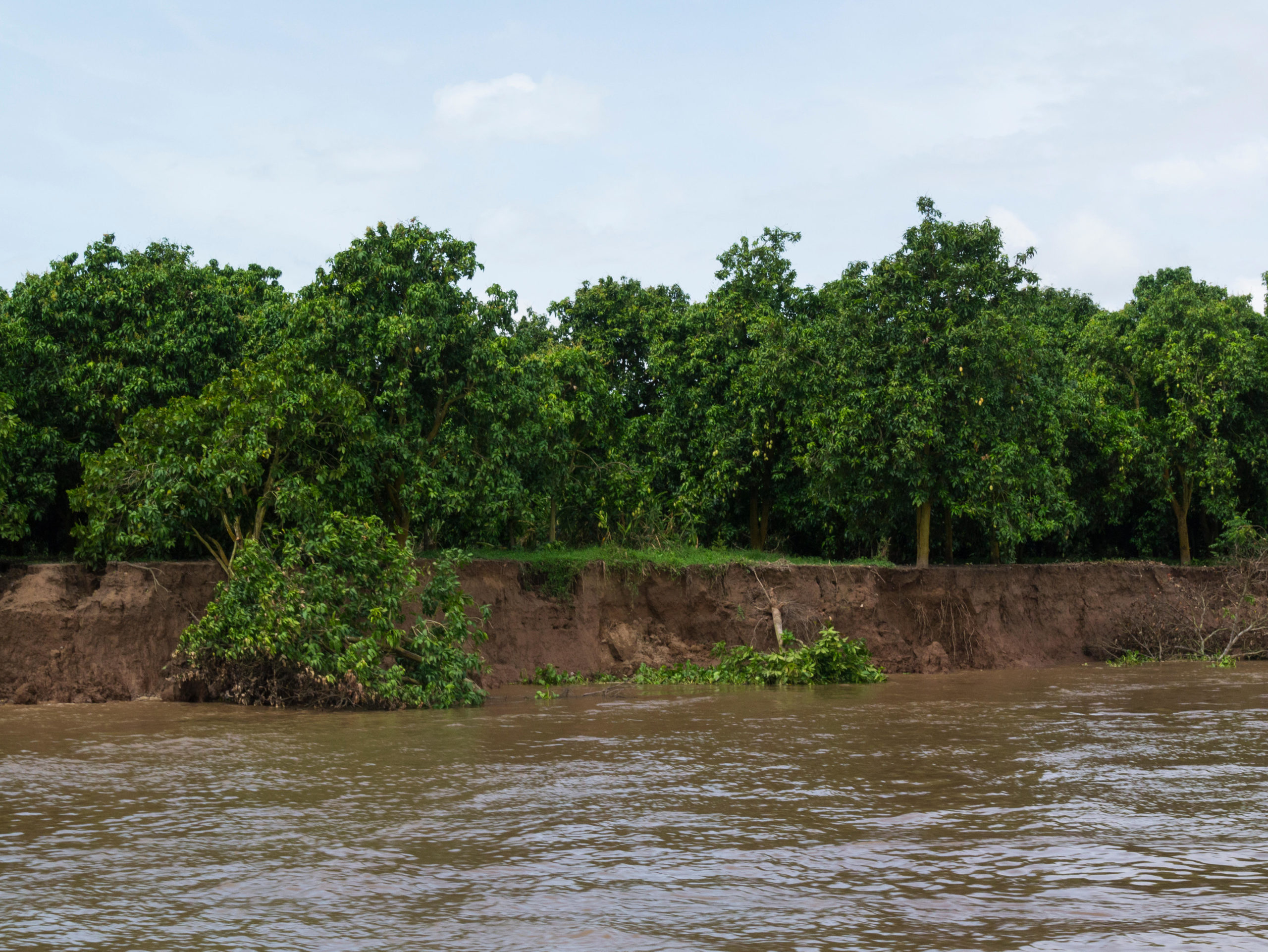
These tools come at a crucial moment, since demand for sand (and other aggregates used in construction) is expected to increase significantly over the next 30 years to support economic growth and meet rising demands for infrastructure. Some of this demand will be met by grinding rocks to manufacture sand, which can be done more sustainably now. But river mining will continue to be an important source of sand – with huge impacts if it is not rigorously regulated.
The Mekong is drowning in sand debt. Decision-makers must work with nature – with the natural dynamics of the river and its flow of water and sediments – to replenish what has been lost and start to rebuild the delta’s reserves. The development of a sand budget for the Mekong will finally allow governments and businesses to plan a sustainable path to a more resilient future; one based on using sand to rebuild the delta as well as building infrastructure on top of it.
